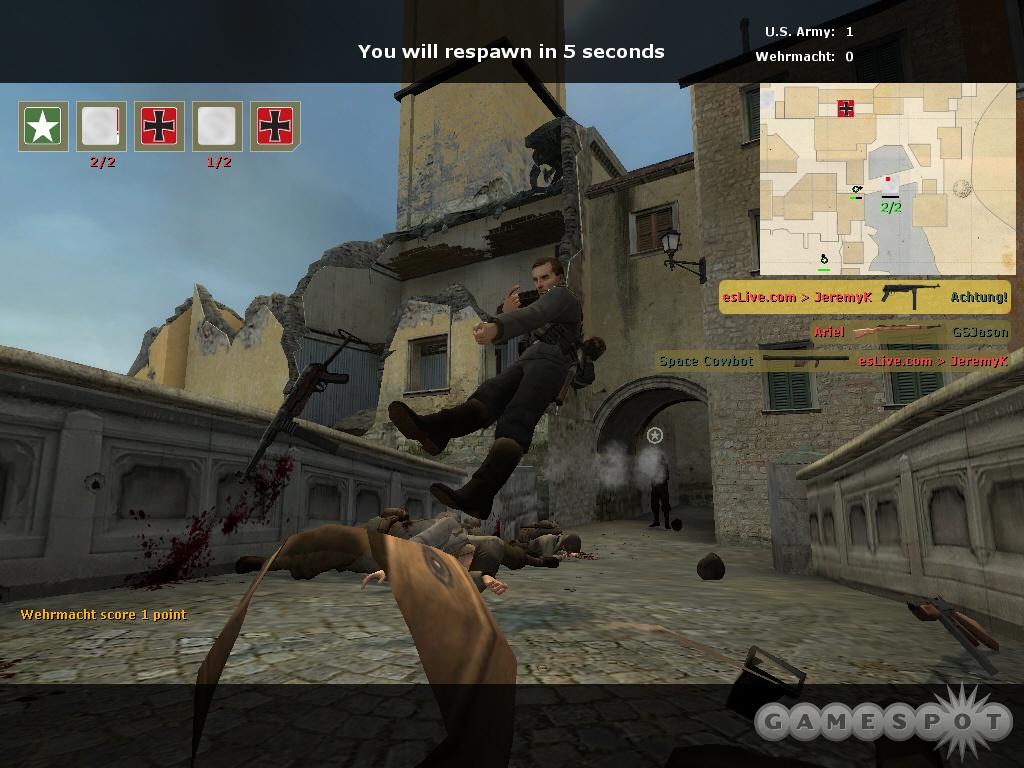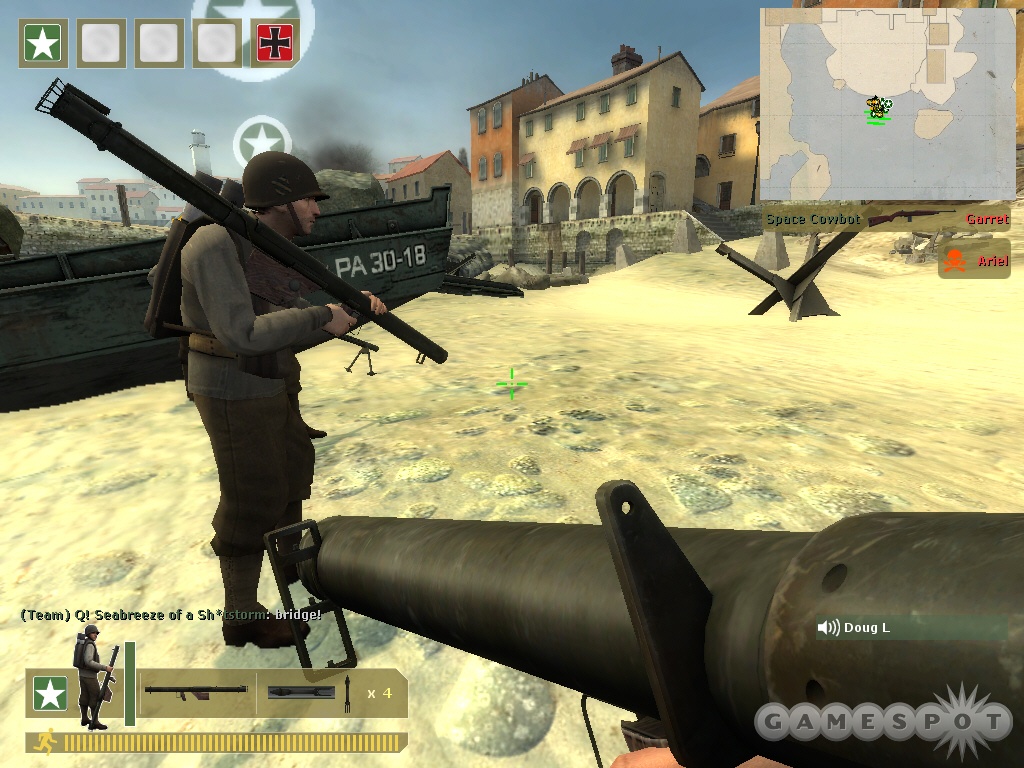Day of Defeat: Source Hands-On - Of Tommy Guns and Flags
We get our hands on the final version of the Source-engine-powered World War II shooter.
The original Day of Defeat first saw the light of day as a fan-made modification using the original engine for 1998's Half-Life, just like another modification from around that time called Counter-Strike. Both modifications went on to achieve plenty of popularity, and both were even snapped up by Half-Life developer Valve, thus becoming official Valve products that hit store shelves after their long runs as completely free online games. Day of Defeat distinguished itself from other first-person shooters by offering highly realistic weapon modeling (including World War II-era automatic weapons with heavy kickback when fired) and team-oriented, objective-based gameplay. Yet despite its attempt to model realistic tactics, Day of Defeat was remarkably fast-paced, since it let players sprint in short bursts and since the maps generally took place in bombed-out battlefields where ruined houses, demolished bunkers, and trenches provided plenty of opportunities for vicious close-quarters combat.

And now, Day of Defeat, like Counter-Strike, has been adapted for Valve Software's Source game engine--the same technology that powered Valve's award-winning 2004 shooter Half-Life 2. As you might expect from the upgrade, Day of Defeat: Source looks much, much better than the original version of the game. And like Counter-Strike: Source, Day of Defeat: Source features some of the famous Half-Life 2 physics in the form of "rag-doll" death animations for slain soldiers, plus barrels and crates that can be blown sky-high by explosions. The new version of the game even seems to support high-dynamic range (or "HDR") lighting.
Like in the original Day of Defeat, the new game features two playable, opposing teams: the US Army and the German Wehrmacht. The two teams must struggle over specific areas on the map (either in the form of flags, which can be captured instantaneously, or strategic points, which can't be captured unless soldiers briefly stand nearby to "convert" the points to their side). The new version of the game features the same basic six soldier kits that appeared in the original game: rifleman, assault, support, sniper, machine gunner, and rocket. All kits are defined by their primary weapons, though each kit also carries at least one secondary weapon, such as a pistol or a knife. And some carry additional items, like smoke or frag grenades.
You choose the next kit you'll use in battle just as you did in the original game: from a menu screen that lists each kit's items and weapons and the characteristics of the primary weapon (damage, accuracy, control, and rate of fire). Each class carries weapons based on the type of armaments that real-life soldiers carried in to battle in World War II, and for the different weapons' strengths, each also has weaknesses that will generally cause you to fail miserably if you try to win a game all by yourself. For instance, the American rocket trooper's bazooka is a massively powerful weapon that can take out multiple enemies with a single well-placed round, but the weapon is also huge and clutters your view. Furthermore, it must be cocked on your shoulder to fire, and when it is, turning the heavy weapon even slightly to aim takes forever and a day.
Each kit seems balanced fairly well; none seem overly powerful, and none seem useless. The assault kits, which carry automatic weapons with relatively gentle kickback (even if they don't pack much of a punch), still seem ideally suited for beginners. However, they're thoroughly outclassed in specific tactical situations, such as against hidden snipers. The best way to capture strategic areas still seems to be to combine assaults in which players use bazookas and Panzerschrecks to flush out snipers before charging forward behind smoke grenades and covering fire from heavy machine guns to suppress enemies as assault troopers rush in, preferably on the enemies' flanks.

In many ways, Day of Defeat: Source's presentation is highly reminiscent of that of Counter-Strike: Source. Like with that other game, Day of Defeat features some minor use of physics and instead seems to focus on trying to re-create the maps and experience of the original game. The game's character models are fairly detailed but are identical for each side, and the best way to coordinate with your teammates still seems to be verbally through a good headset. If it was, in fact, Valve's intention to faithfully re-create Day of Defeat, the developer seems to have more or less succeeded, as the maps, weapons, and interface all seem to stay true to that game. If anything, the game's pace actually seems slightly faster than that of the original (which was already surprisingly fast for a game that took a realistic approach to World War II battles), and that doesn't seem like a bad thing. The game is scheduled for release on Valve's online Steam service on Monday, September 26.
Got a news tip or want to contact us directly? Email news@gamespot.com
Join the conversation